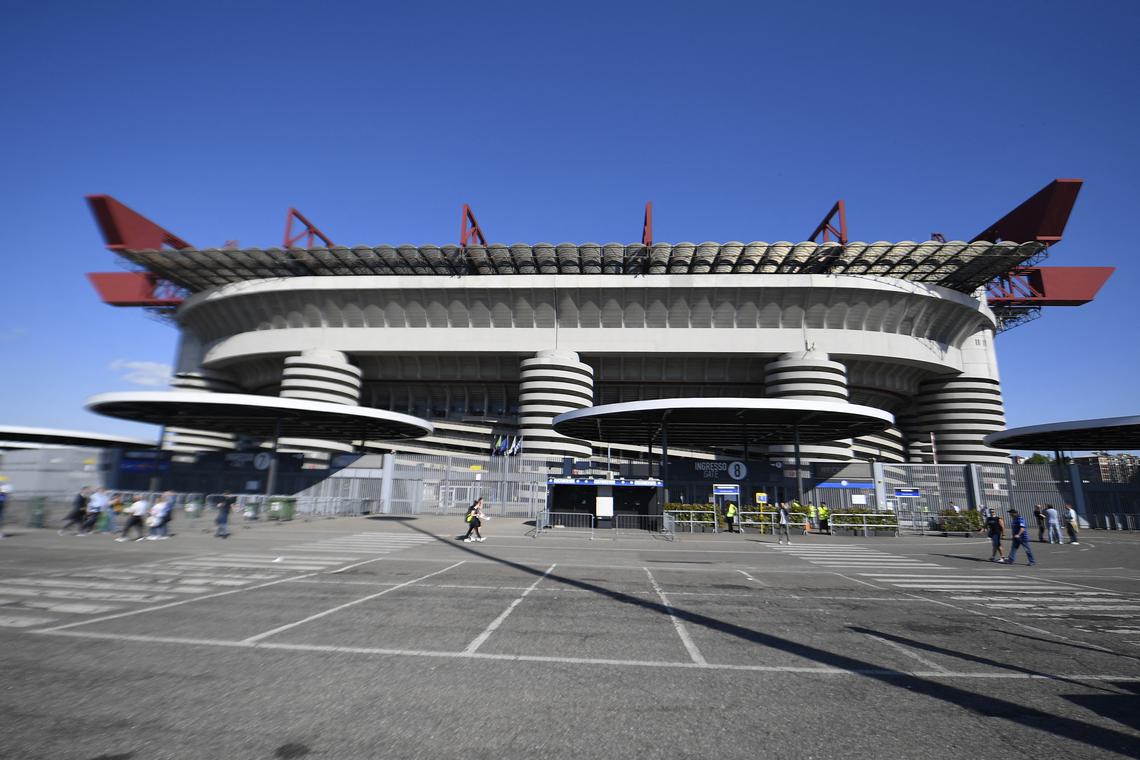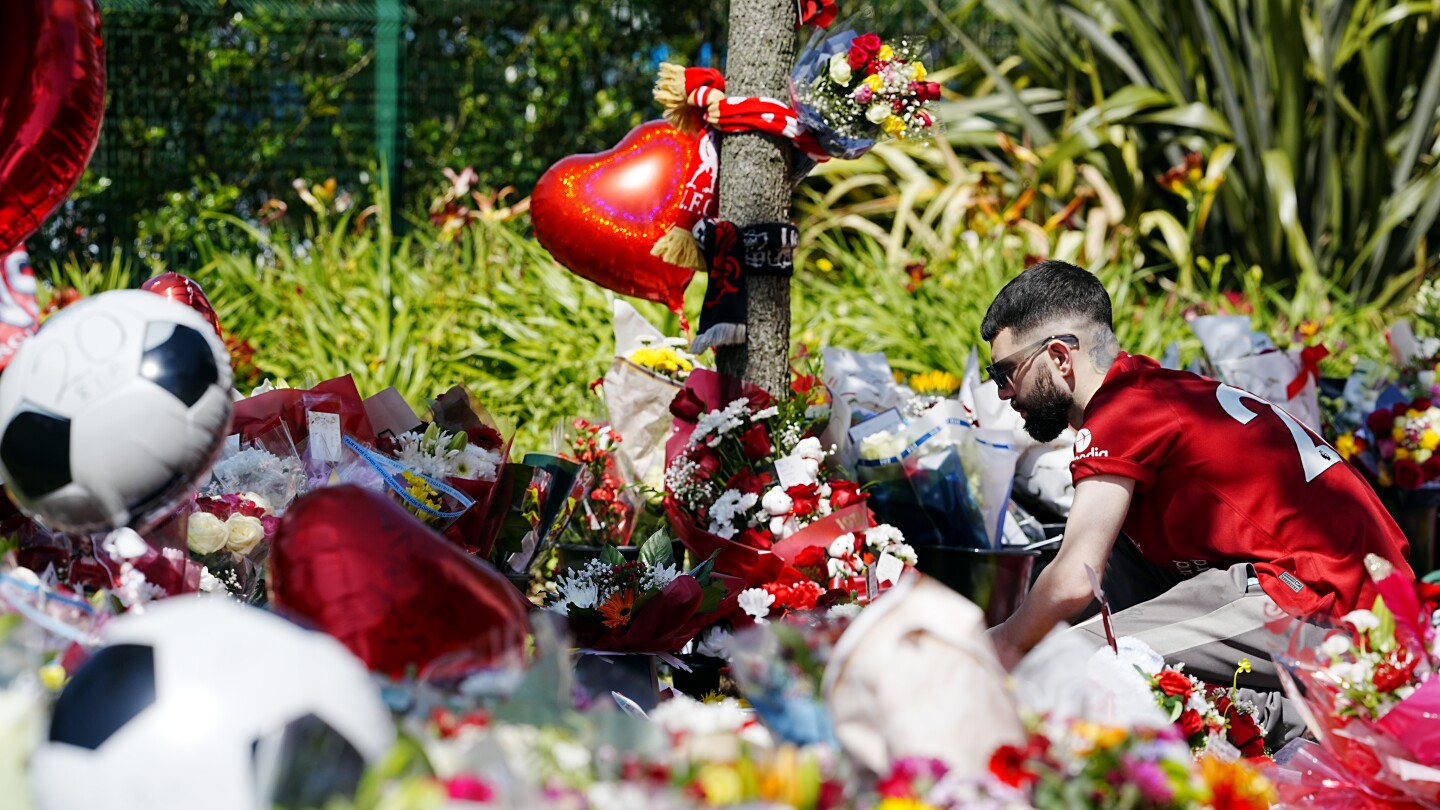MILAN – Milan’s San Siro is one of the most famous stadiums in world soccer, but the storied home of AC Milan and Inter Milan is showing its age and lags behind what other major European clubs offer their fans.
Italy is trying to raise its game when it comes to stadiums, pressed by foreign investors who have acquired a number of clubs including the two Milan giants, and also needing arenas that are fit for purpose when it co-hosts the 2032 Euros, with Turkey.
But teams like AC Milan and Inter, as well as Lazio and Roma further south, are struggling to rebuild or renovate, wrangling with public bodies who often own stadiums, and getting caught up in red tape.
The result is that only six Italian stadiums were built or redeveloped in the 2007-2024 period, compared with 19 in Germany, 13 in England and 12 in France, according to consultancy firm PwC.
“At the San Siro stadium, we can’t cook anything. The little food that we sell is all microwaved three minutes beforehand,” AC Milan Chairman Paolo Scaroni told a PwC Italy event in March.
He contrasted it to the situation in Britain, where Tottenham Hotspur’s new stadium even features an in-built microbrewery “because the English like to drink beer, and we can’t even cook a plate of spaghetti.”
The Tottenham stadium, designed by specialist company Populous, opened in 2019 at a cost of around 1 billion pounds ($1.4 billion) and features a retractable pitch. It also hosts other events such as NFL games.
GOVERNMENT HELP
The Italian government is trying to help, with a plan in the works to appoint a special commissioner with power to fast-track projects worth 5 billion euros ($5.8 billion) across different agencies, and speed up preparations for Euro 2032, the first major tournament in Italy since the 1990 World Cup.
The Italia 90 tournament, when matches were played at 12 venues across the country, marked the last time Italy embarked on a serious round of stadium upgrades.
“For Italian teams, sports facilities are the real gap with European peers,” said Luigi De Siervo, Chief Executive Officer of Italy’s top flight soccer league Serie A.
Although crowds have risen to levels not seen since the early 2000s, Serie A clubs generated just 440 million euros in matchday revenue in 2023-24 — according to a report from Deloitte — less than half of what England’s Premier League earned.
“More modern arenas structurally generate higher match day revenues, they usually have a higher occupancy rate, more food outlets, with different price ranges, and pricier tickets,” said Cristian Celoria, partner at consultancy firm PwC.
EURO 2032 CONCERNS
Besides frustrating club owners, Italy’s lack of progress in redeveloping its sporting infrastructure could harm its role as a co-host of the Euros.
Italy must give European soccer’s ruling body UEFA a list of five stadiums to host Euro 2032 games by October next year.
At present, among the 10 arenas Italy named in its initial bid document, only the Juventus one in Turin — one of the few club-owned grounds in Italy — is fit for the tournament, according to a UEFA official.
The 41,000-seater venue was completed only in 2011, replacing the Stadio delle Alpi which was built for the 1990 World Cup.
Venues needing redevelopment or new builds can be included in the final Euro 2032 shortlist, but the projects need to be fully financed and approved by next year’s deadline, said the UEFA official, who asked not to be named.
“The need for a special commissioner is becoming even more urgent, as next year we will undergo a series of checks that may even result in some matches being reallocated to Turkey,” said De Siervo, the Serie A chief.
However, the Italian Football Association remains confident it can meet the deadline, with work underway in Bologna and Florence and scope to bring Rome’s Olympic Stadium and the current San Siro venue in line with specifications.
FATE OF SAN SIRO
The San Siro, with its striking spiral staircases wrapped around the outside of the stadium, was one of the symbols of Serie A’s golden age in the 1990s, but much like Italian soccer in general, it has seen better days.
AC Milan and Inter – owned by U.S. investment firms RedBird and Oaktree respectively – have billed as unfeasible a full revamp of the arena, officially known as the Giuseppe Meazza after a forward who played for both clubs in the 1920s-1940s.
AC Milan and Inter are in talks to jointly buy the stadium, built in 1926, and the surrounding area from the Milan municipality as part of a 1.2 billion euro redevelopment including a real estate project.
The plan, first presented in 2019, envisages the clubs continuing to use the 76,000-seater stadium until a new one is built nearby. Once that is ready, the old ground would be demolished except for a heritage section comprising part of its second tier.
The clubs, however, face opposition from those who would like to preserve one of the temples of Italian soccer.
“It is still a functional stadium. It can be modernised, and we have fought for that, but the problem is that no one is listening to our calls,” said Luigi Corbani, president of a citizens’ committee opposing clubs’ demolition plans.
Even rock stars who love playing concerts in the huge San Siro have chimed in.
“It is the greatest stadium in the world, it has personality, heart and soul,” Bruce Springsteen’s guitarist Steven Van Zandt, aka Little Steven, told Italy’s Corriere della Sera daily, calling plans to knock it down “criminal”. REUTERS


